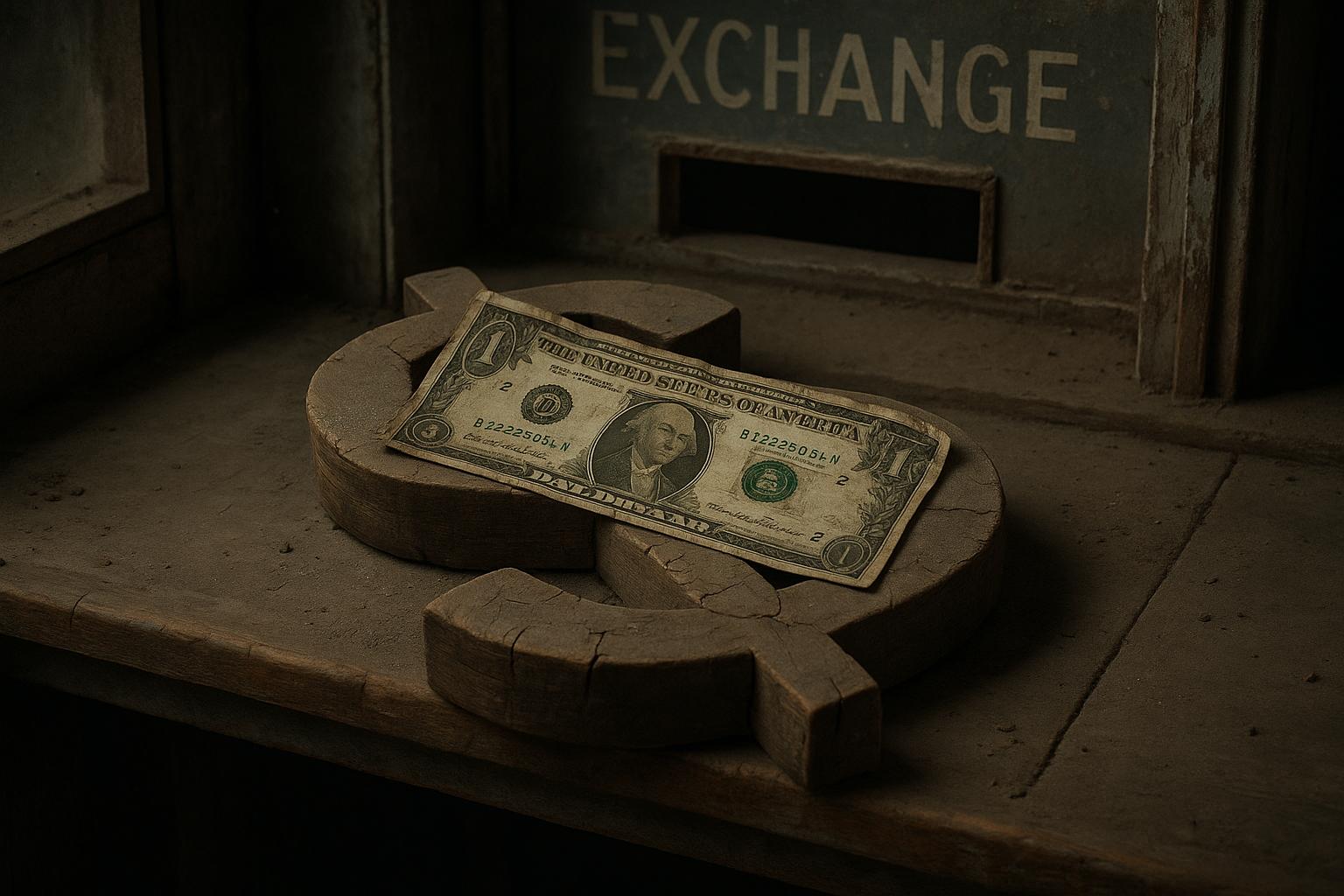The rising tide of U.S. tariffs and a broader retreat from international trade threaten to undermine the U.S. dollar’s longstanding position as the world’s anchor and safe-haven currency, raising significant implications for the global monetary system and the U.S. economy. A forthcoming paper in the fall 2025 edition of the Brookings Papers on Economic Activity argues that the dollar’s unique role enables the United States to enjoy relatively low interest rates, attract substantial foreign investment, allow American firms to borrow cheaply on global markets, and sustain higher domestic wages. These benefits hinge critically on the dollar’s safe-haven status—its historical tendency to appreciate during periods of global financial stress. However, the rising barriers to trade and the imposition of tariffs weaken this dynamic, potentially triggering higher U.S. interest rates, capital flight, diminished firm valuations, and wage declines domestically. The authors warn that without free trade, the U.S. dollar-centric international system may collapse or see its dominance ceded to another currency, most likely the euro.
This analytic model, unique in quantifying these effects, notes that ongoing U.S. tariffs and retaliations have brought average tariff levels close to 17%, edging toward a critical threshold—estimated at around 26%—where exchange-rate management by countries could unravel or shift allegiance to a new anchor currency. This shift is not hypothetical; it reflects growing strains on the global confidence that anchors dollar dominance, particularly as geopolitical tensions and policy unpredictability shake investor trust.
Despite these concerns, the Bundesbank President Joachim Nagel recently highlighted that while the euro lacks the capacity to outright replace the U.S. dollar as the primary reserve currency, it must still fortify its global role to shield the eurozone from volatility caused by erratic U.S. policies. Nagel underscored the importance of sound fiscal and military policies, open capital markets, and strategic investment in innovation and defense to enhance the euro’s international stature. Nevertheless, he expressed caution, noting that the euro's recent valuation gains are modest in a trade-weighted context and warned of the potential risks posed by unregulated stablecoins, which could destabilise financial markets by precipitating sudden sell-offs of key reserve assets like U.S. Treasury securities.
The dollar’s vulnerability became particularly evident in early 2025 when it hit decade lows against safe-haven currencies such as the Swiss franc and the euro amid escalating tariff disputes, notably with China. The Chinese decision to raise tariffs on U.S. goods compounded fears of a prolonged trade war, instigating a broad sell-off in U.S. Treasuries whose yields spiked sharply. Market commentators described this episode as evolving beyond mere deleveraging into a dollar crisis, reflecting deep investor scepticism about U.S. trade and economic policies. The dollar index fell below critical support levels for the first time in nearly two years, while the Swiss franc and Japanese yen, traditional safe havens, appreciated.
Former U.S. Treasury Secretary Janet Yellen expressed significant concern regarding the erosion of trust in U.S. economic policy caused by the Trump administration’s tariff measures and broader trade stance. In an interview, she linked recent volatility in U.S. Treasury yields, traditionally a safe investment, to growing investor unease about the economic outlook and U.S. commitments. Yellen criticised the administration’s approach to trade and international alliances, warning that isolationist policies might drive traditional U.S. partners closer to China. While she did not anticipate an immediate financial stability crisis, she emphasised the Federal Reserve’s capacity to intervene if risks materialise.
Amid this economic uncertainty, investors have turned to traditional safe havens such as gold, which reached record highs above $3,000 an ounce in early 2025. The surge in gold prices reflects both the weakening dollar—which makes gold cheaper internationally—and the broader geopolitical and trade tensions stoked by tariff policies. Analysts at ANZ cited ongoing trade conflicts, easing monetary policy, and central bank gold purchases as drivers of this trend, while other precious metals including silver, platinum, and palladium also saw price increases.
Market reactions in the wake of tariff announcements underscore the fragility of confidence in the U.S. currency. For instance, when President Trump announced sweeping new tariffs targeting about 60 countries, the dollar broadly weakened, while safe-haven assets like the Japanese yen and Swiss franc strengthened. Contrastingly, the euro maintained resilience, buoyed by Europe’s measured responses aiming to shield its economy rather than retaliate aggressively. In the emerging markets, currencies like the Mexican peso weakened due to proximity to U.S.-imposed tariffs. Such developments have intensified speculation that the Federal Reserve might cut interest rates multiple times within the year as a buffer against the economic fallout.
In sum, the combination of protectionist trade policies, retaliatory measures, and fluctuating global confidence is challenging the very foundations of dollar dominance. While the euro is positioned as the principal candidate to assume greater global monetary influence should the dollar falter, achieving such status demands significant internal reforms and external confidence, highlighted by Bundesbank leadership. Meanwhile, gold and other safe-haven assets have become preferred refuges amid the uncertainty. Future shifts in global economic policies and geopolitical alignments will be critical in determining the stability and hierarchy of the international currency system going forward.
📌 Reference Map:
- Paragraph 1 – [1], [4]
- Paragraph 2 – [1], [2]
- Paragraph 3 – [3]
- Paragraph 4 – [4]
- Paragraph 5 – [5]
- Paragraph 6 – [6], [2]
Source: Noah Wire Services
